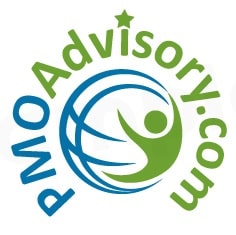(Technique): Does Strategic Portfolio Management differ based on project/program methodology used?
Synthesized by ChatGPT then edited and enhanced by Te Wu.
Specific contributors include:
-
- Cristina Niculescu
- David Vincenti
- Kris Sprague
- Todd Generotzke
- Anonymous
While the foundational tenets of Strategic Portfolio Management (SPM)—aligning investments with enterprise strategy, optimizing value delivery, and managing risk—remain consistent across organizations, the execution of SPM is far from one-size-fits-all. The methodologies employed at the project and program levels—whether Agile, Waterfall, or Hybrid—can influence how portfolio governance, prioritization, performance measurement, and decision cadence are operationalized. Robust SPM framework can accommodate the various methodologies.
In Agile-centric organizations, for instance, traditional calendar-driven reviews (e.g., monthly or quarterly check-ins) lose relevance. Instead, dynamic, event-driven mechanisms that support iterative planning, real-time reprioritization, and decentralized decision-making become essential. Conversely, in environments dominated by Waterfall methodologies, structured stage-gates and long-term planning cycles align better with the SPM framework. Hybrid environments, blending both, call for flexible governance models and integrated reporting systems that can respond to the demands of both predictability and adaptability.
Ultimately, SPM must remain methodology-agnostic but highly context-aware. Portfolio leaders must tailor governance structures and performance metrics to the execution methodologies in play. Failure to align behavioral management and executive controls with operational realities can render strategic oversight ineffective, regardless of the portfolio’s methodological orientation.
In today’s dynamic landscape, strategic portfolio leaders must not only monitor the financial health of the portfolio and ensure alignment with corporate objectives—they must also develop the organizational agility to flex SPM practices in response to evolving delivery paradigms. This adaptability is no longer a competitive advantage; it is a strategic imperative.
Contribution by: Cristina Niculescu
Yes, Portfolio Management is focusing primary on the financial health of the portfolio, and about alignment to company objectives. Also the methodology used—Agile, Waterfall, or Hybrid—affects how priorities are assessed and how flexibility is introduced, so this needs to be taken into account at Portfolio level.
Contribution by: David Vincenti
Strategic Portfolio Management differ based on project/program methodology only to the extent that executives have changed their controls to accommodate the methodology. For example, in an organization with widely deployed Agile methodologies, traditional monthly, quarterly reviews lose their utility. Event-drive (phase-gate) reviews to approve budget investment would similarly be less meaningful. However, if manage behaviors to not adjust to methodology, inputs to management similarly will not (need to) change.
Contribution by: Kris Sprague
Strategic Portfolio Management (SPM) practices and approaches can be influenced by the program/project methodologies used. SPM focuses on aligning programs and projects with business strategy, and the specific methodologies employed within those programs and projects can impact how SPM is implemented and measured.
SPM is not a one-size-fits-all approach. It needs to be tailored to the specific context and methodologies used within the organization to ensure effective strategic alignment and value delivery.
Contribution by: Todd Generotzke
I feel that Strategic Portfolio Management (SPM) does differ depending on the project or program methodologies used. SPM needs to adapt its governance, planning, prioritization, and performance management practices to align with how work is carried out across the organization.
The core principles of SPM remain the same which include aligning investments to strategy, optimizing value, and managing risk. The main difference is how SPM is executed using different tools, cadence, governance and metrics. These items will need to ‘flex’ to support the execution process / methodology whether it’s traditional waterfall, agile, product-focused, or a hybrid model.
Contribution by: Anonymous
Yes, but the core principles remain the same—aligning investments with strategy and optimizing value.
Differences include:
-
- Agile environments require more frequent reprioritization and decentralized decision-making.
- Waterfall environments benefit from structured stage gates and long-term planning.
- Hybrid models need adaptable governance and integrated reporting.
- Strategic Portfolio Management must be methodology-agnostic but context-aware.
